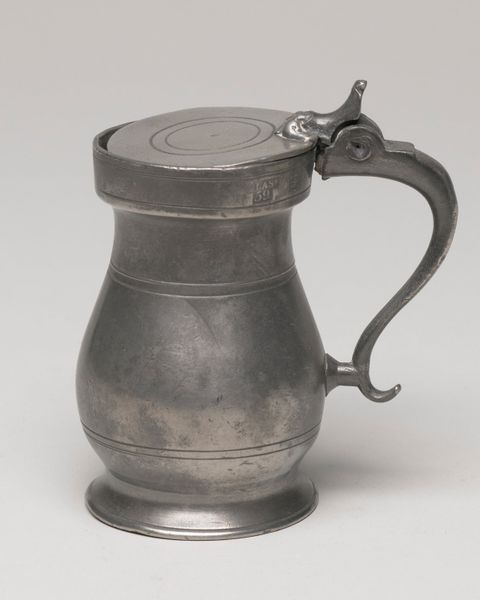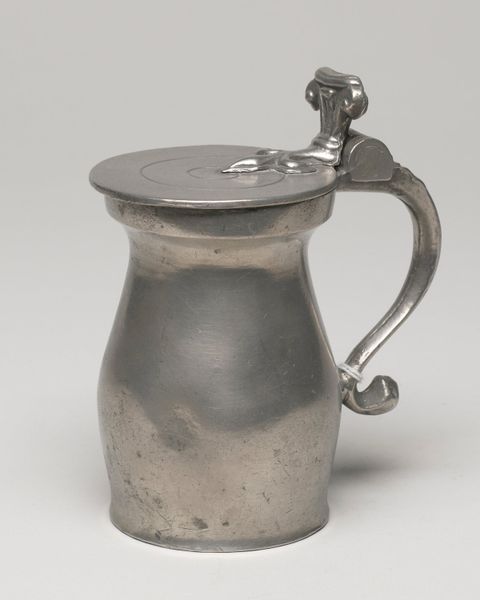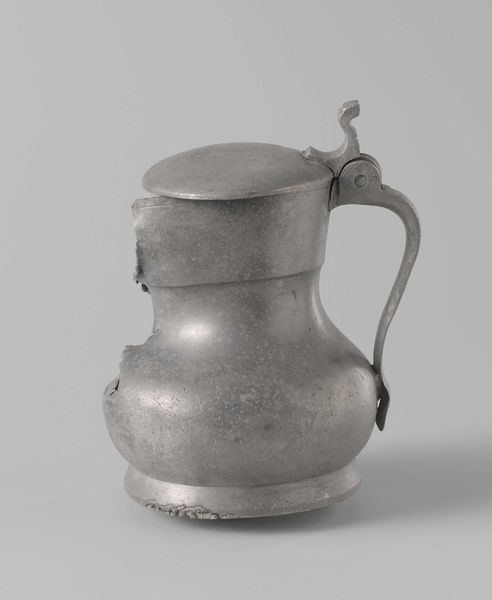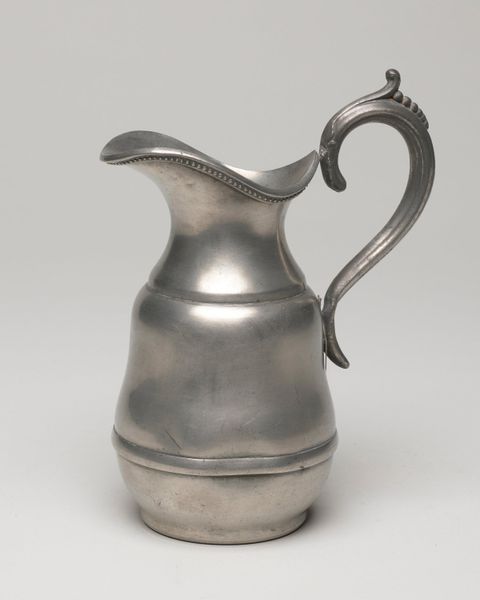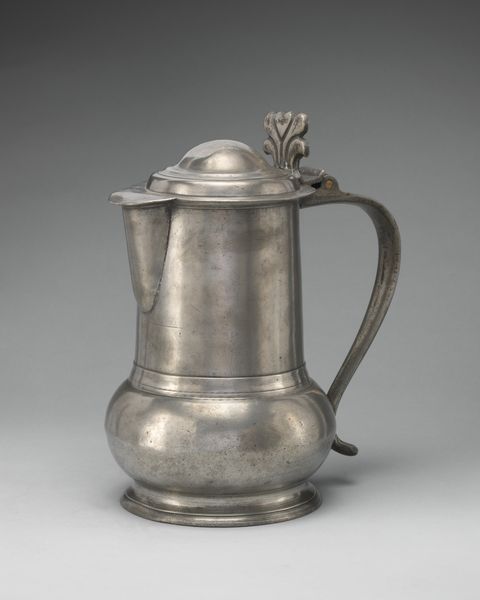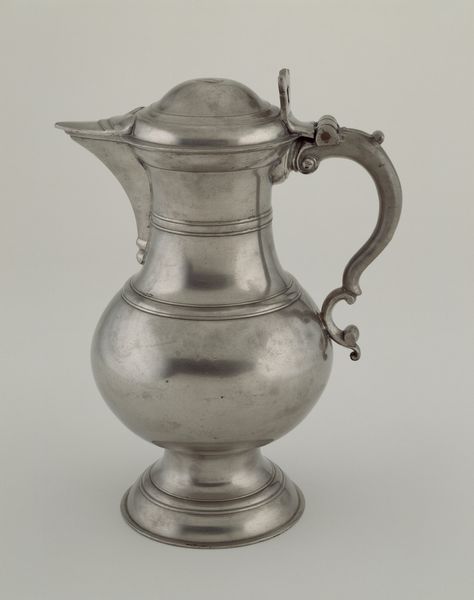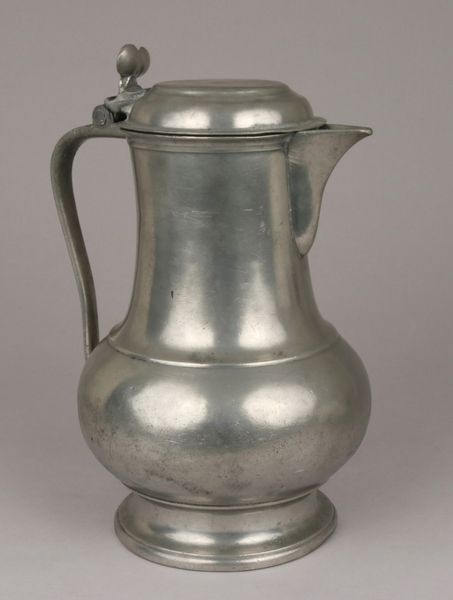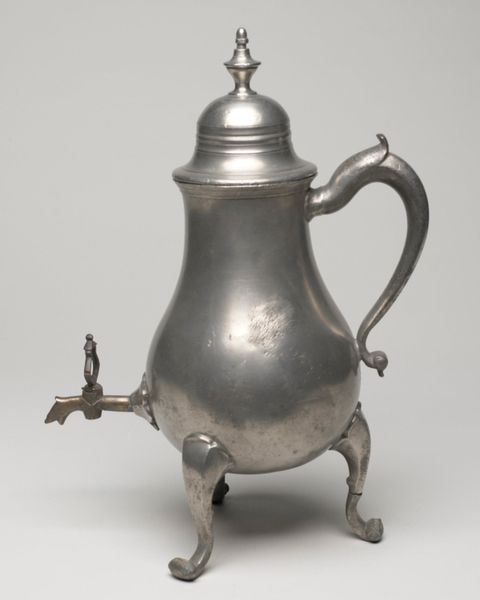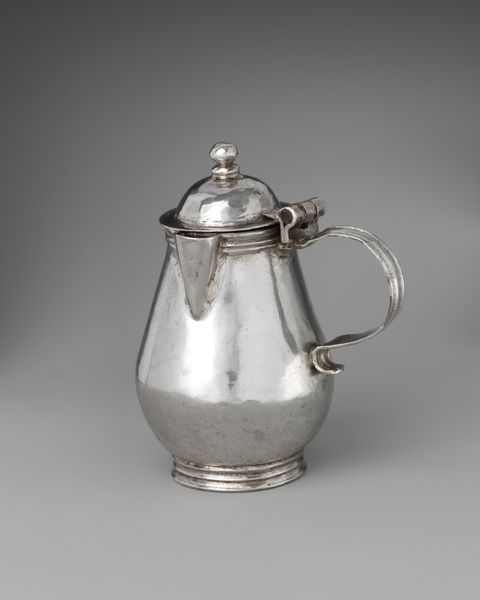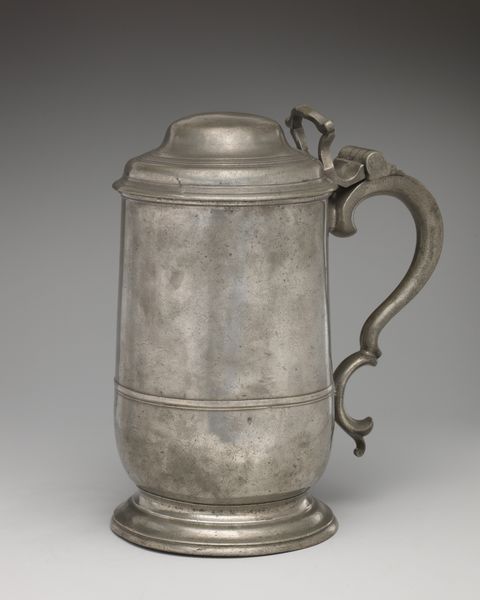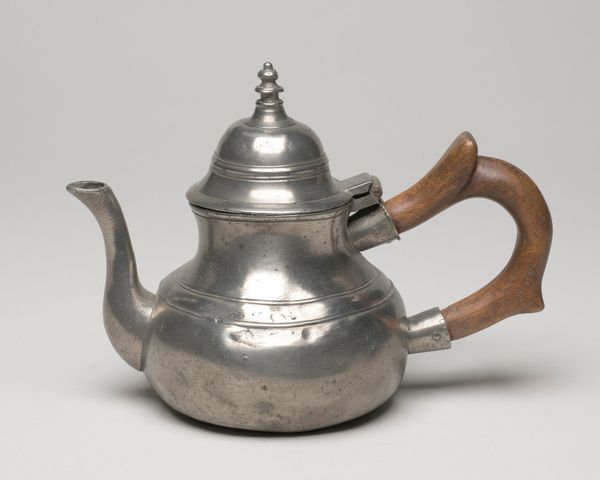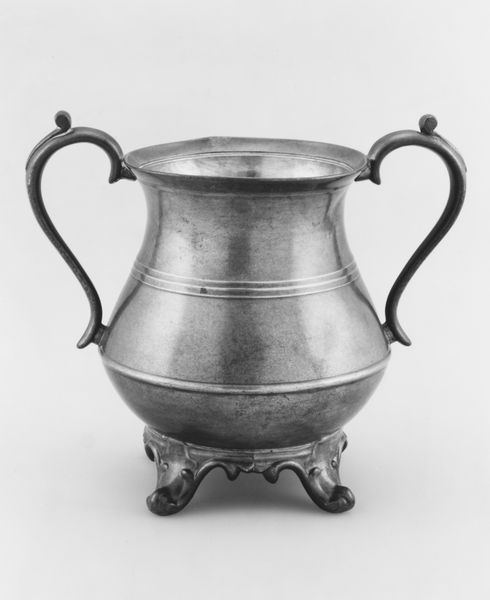
metal, ceramic
#
metal
#
ceramic
#
stoneware
#
ceramic
Dimensions: 5 3/8 x 5 3/4in. (13.7 x 14.6cm)
Copyright: Public Domain
Curator: Here we have an anonymous “Tankard” dating from the 19th century, part of the collection at the Minneapolis Institute of Art. It's constructed from metal and ceramic materials, stoneware most likely. Editor: Immediately, I’m struck by the cool, almost austere feel. The smooth, gray surface and simple form give it a somber air, despite its practical function. It is definitely crafted for long-lasting heavy use. Curator: Absolutely. Looking at this tankard, I’m reminded of the socio-political climate of the 19th century, and how even everyday objects reflect power dynamics. The craftsmanship involved— the labor needed to form both ceramic and metal—hints at a specific social structure where some possessed the time and resources for such specialized work, while others likely used this to receive their fill of liquids after a hard day’s work in agriculture. Editor: I agree. Consider the means of production— the mines from where this metal originated, the labor extraction, and the energy expended on refining the ore, then shaping this vessel, firing the clay in this case. The ceramic elements add another layer, likely sourced and produced in different geographical locations with varying local economies and social structures. The presence of both ceramic and metal points towards specific use since each material carries liquids with distinct temperature and PH considerations. Curator: And let's not forget about access. This object signifies specific modes of alcohol and perhaps water consumption within certain communities. The question remains, who would own such a vessel and how much purchasing power would they yield? This would definitely need additional investigation to fully unlock the historical narrative that this tankard tells. Editor: Indeed. The tankard is not simply a container. The deliberate layering of both metal and stoneware represents human efforts to create not just functionality but a kind of cultural value. We see an intent that goes beyond the basic human need for beverage storage, pointing towards community expression. Curator: Considering this artwork through an intersectional lens makes me question ideas about class and access. This artifact challenges notions about utilitarian art. The very presence of a tankard made of valuable materials calls attention to economic disparity and consumerism. Editor: Exactly. The means, methods, and context involved in making even this, an everyday item, demonstrates the complexities and cultural implications embedded in objects. Curator: I've found new entryways for analysis. Objects contain stories. Editor: Agreed. Material culture is laden with potential narratives that allow us to examine processes and systems of resource usage.
Comments
No comments
Be the first to comment and join the conversation on the ultimate creative platform.
